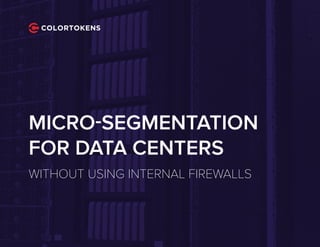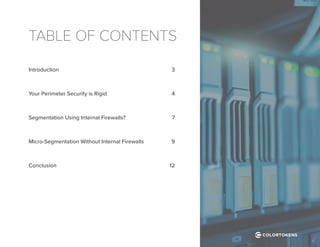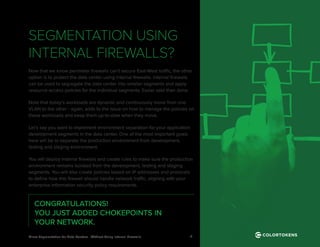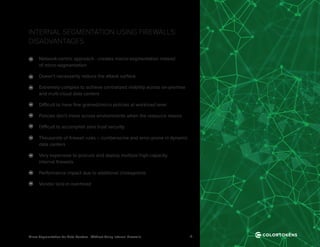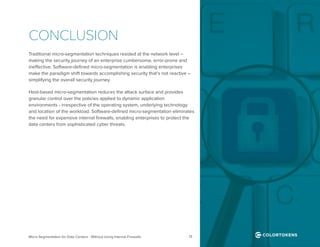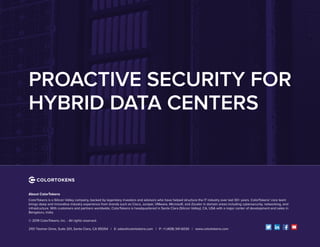The document discusses the limitations of traditional perimeter and internal firewall methods for securing data centers, emphasizing the need for micro-segmentation due to evolving cyber threats. It advocates for a software-defined approach to micro-segmentation that enhances visibility and policy management across dynamic environments, ultimately providing better protection against sophisticated attacks. The conclusion highlights that host-based micro-segmentation simplifies security efforts and reduces reliance on costly internal firewalls.
